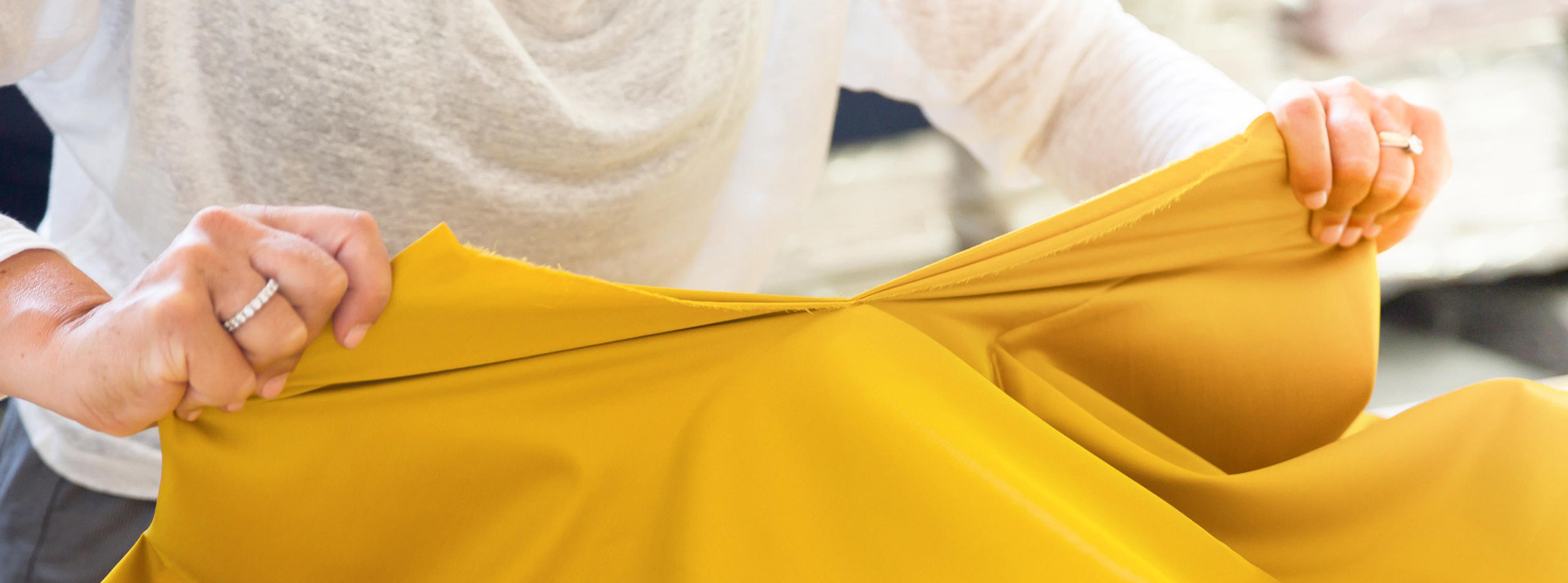
Invariants Gold Side Table
USD 5,250
Ships in 11-12 weeks

Discover modern carbon fiber pieces by Frisoli: inspired by the fascinating silhouettes of the aircrafts crafted at the family manufacturing company, Romina and Michele started to design and produce modern furniture and decorative pieces with a unique style, using innovative raw materials.
What is the philosophy behind Frisoli's brand?
We were inspired by the fascinating silhouettes of the aircrafts that we see everyday at our manufacturing company and by their ability to stir our innermost emotions. Our idea is to recreate the emotion of flying that is inherent to the objects designed and created for this specific purpose. Collections like “NOT FOR FLY” are intended to be integrated into our daily life, the name derived from a technical specification found on all aircrafts components that cannot be utilized for defective reasons. Therefore, Frisoli was born from the desire to give new life to the objects which surround us in our family business, so that they may, in turn, inspire daily life. Design is the tool that allows us to add an artistic and fascinating touch to those objects, allowing us to fully enjoy them every day.
The main characteristic of your brand is the use of carbon fiber, a material used in the aeronautics sector. What inspired this choice and what are the advantages of using such particular materials?
The materials we employ are those used by the aeronautical industry, and include, but are not limited to: composite fibers, such as carbon fiber, fiberglass, kevlar, and other materials derived from phenol. Aircrafts frames are also made of metals such as aluminum and steel which are at the core of our manufacturing skills. The choice of materials derives mainly from our technological and manufacturing abilities. Our expertise in working with composite materials is grounded in the fact that carbon fiber is the main material used for airplane and helicopter components, which our company manufactures. Composite materials are fascinating primarily for their fabric-like look and texture and can be cut down to size to suit any dimension in the same way a tailor cuts fabric for their models. This “fabric” can be modeled and treated with resin to become more resistant than metal.
The second fascinating characteristic of these composite materials is their minimal thickness that contributes to its natural lightness. Intriguing and daring shapes can be derived from composite fibers, its thickness ranging from 2 to 5 millimeters, thus giving the resulting objects a dynamic and slender character to the creation.
The final characteristic that distinguishes Frisoli’s materials is the visual and design experimentation we have carried out for almost two years and will continue to cultivate. Composite fibers are not left in their original color but rather are featured in vivid hues, spotted patterns, and with decorative accents.
How would you describe the aesthetic of your products? What makes them unique?
All our creations undergo the same production flow as aircrafts, pouring the emotion of the very process into each piece. Notwithstanding, the inspiration for our designs and aesthetic does not come from the aircraft shapes themselves, but rather draw from the artistic world. We are inspired by artists and artistic movements, with composite material used similarly to a painter’s canvas.
One of the characteristics that makes our creations unique is certainly the medium. Both composites and metals are treated to transform their aesthetic qualities. Each piece is composed of a unique mix of fibers, patterns, colors, and luminosities.
Our creations are unique because they are assembled and finished exclusively by hand, and the singularity of their manufacturing process and surface patterns is what makes Frisoli creations easily recognizable. Our manufacturing expertise in working these materials always goes hand-in-hand with a strong attention to the aesthetic qualities of our products.
What is the most fascinating stage in the creation of a Frisoli product?
All manufacturing stages have a distinct appeal, but having to choose one, we would pick polymerization, which is the process during which the piece is “cooked” in an autoclave, where it hardens inside its mold. The fascination lies in seeing the fabric-style material come to life as a solid object.
What are your future projects? Can you tell us more?
Beginning next year, we will launch a new collection born from a collaboration with Domenico De Palo, a designer well-known for his previous collaborations with brands such as Antonio Lupi, Visionnaire, and Rugiano. At the same time, we will launch our new tableware collection in which we experiment new ways to craft fiberglass. We will keep you posted!

USD 5,250
Ships in 11-12 weeks

USD 4,195
Ships in 11-12 weeks

USD 2,300
Ships in 11-12 weeks

USD 7,505
Ships in 9-10 weeks

USD 5,395
Ships in 13-14 weeks

USD 2,325
Ships in 9-10 weeks

Born from the Sali family’s passion for fine textiles in the late 1950s, Biancoperla embodies over…

Italian artist and ceramist Coralla Maiuri transforms porcelain into dreamscapes of light, sky, an…